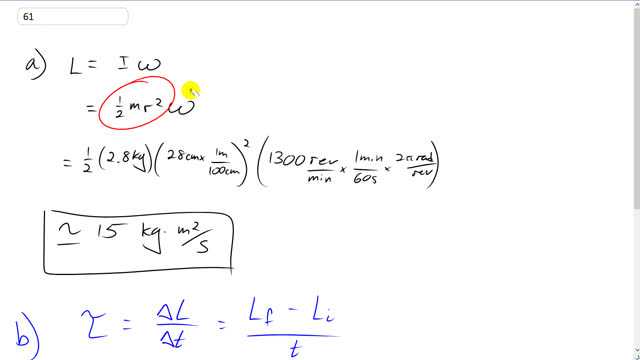
- What is the angular momentum of a 2.8-kg uniform cylindrical grinding wheel of radius 28 cm when rotating at 1300 rpm?
- How much torque is required to stop it in 6.0 s?

In order to watch this solution you need to have a subscription.
This is Giancoli Answers with Mr. Dychko. Angular momentum is the moment of inertia times the angular velocity and for a uniform disk, the moment of inertia is one-half times its mass times its radius squared. And then we plug it into a calculator and we get one-half times 2.8 kilograms times 28 centimeters converted into meters— by multiplying by 1 meter for every 100 centimeters— square that radius times by the angular velocity expressed in radians per second so take 1300 revolutions per minute times 1 minute for every 60 seconds and times 2π radians per revolution and you end up with about 15 kilogram meter squared per second is the angular momentum. So the torque required to bring this platform or grinding wheel to rest in 6 seconds... well, we know the torque is change in angular momentum divided by time and there's no final angular momentum so its just negative initial angular momentum divided by time. So that's negative 14.9423 kilogram meter squared per second that we discovered in part (a) divided by 6 seconds which gives about negative 2.5 newton meters and this negative sign means the torque is in the opposite direction to the initial angular velocity.